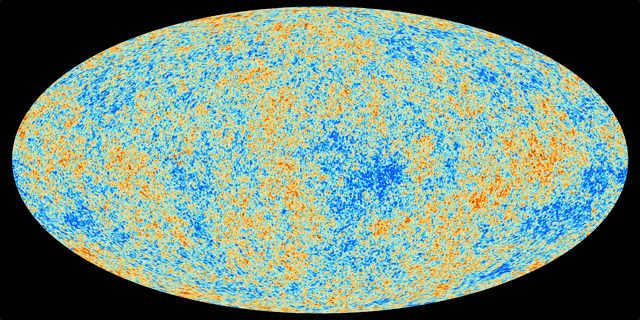Relic radiation (or cosmic microwave background radiation) [1] – cosmic electromagnetic radiation that exhibits high isotropy and possesses a spectrum that is characteristic of a perfect black body with a temperature of 2.725 K.
The prediction of relic radiation was a theoretical part of the Big Bang theory. While various aspects of the original Big Bang theory have since been revised, the underlying principles that allowed for the prediction of relic radiation’s temperature remain unchanged. It is theorized that relic radiation has been preserved from the early stages of the universe’s existence and is evenly distributed throughout. In 1965, experimental confirmation of its existence was obtained. Alongside the cosmological redshift, relic radiation is regarded as one of the primary pieces of evidence supporting the Big Bang theory.
As per the theory of the Big Bang, the initial Universe was a heated plasma made up of photons, electrons, and baryons. Because of the Compton effect, photons consistently interacted with the remaining plasma particles, undergoing elastic collisions and exchanging energy. As a result, the radiation remained in a state of thermal equilibrium with matter, and its spectrum matched that of a pure black body.
As the Universe expanded, the plasma cooled due to the cosmological red shift. Eventually, the electrons combined with protons and alpha particles to form atoms, a process known as recombination. This occurred when the plasma temperature reached approximately 3000 K, marking an approximate age of the Universe of 400,000 years. At this point, photons were no longer scattered by neutral atoms and were free to move through space without interacting with matter. The surface of the last scattering, observed as a sphere, represents the farthest object observable in the electromagnetic spectrum.
As the universe continued to expand, the temperature of the radiation gradually decreased and is now measured at 2.725 K.
Prediction [ edit edit code ].
In 1948, Georgi Gamow, Ralph Alpher, and Robert Herman made a groundbreaking prediction about relict radiation. This prediction was based on their pioneering work on the hot Big Bang theory. Alpher and Hermann were able to determine that the temperature of the relic radiation should be 5 K, while Gamow predicted a temperature of 3 K [2]. Prior to this prediction, there were some estimates of the temperature of space, but they had several limitations. Firstly, these estimates only measured the effective temperature of space and did not take into account the radiation spectrum following Planck’s law. Secondly, these estimates were influenced by our specific location at the edge of the Milky Way galaxy and did not assume isotropy of the radiation. It’s worth noting that these estimates would have yielded significantly different results if Earth were located elsewhere in the universe.
In 1955, Tigran Aramovich Shmaonov, a graduate student in radio astronomy at the Pulkovo Observatory, conducted measurements of radio emissions from space with the guidance of renowned Soviet radio astronomers S. E. Khaykin and N. L. Shmaonov. Alongside E. Khaykin and N. L. Kaidanovsky, Shmaonov successfully detected microwave noise emission at a wavelength of 32 cm [3]. Based on these measurements, it was determined that the absolute value of the effective temperature of the background radio emission is approximately 4 ± 3 K. Shmaonov also observed that the intensity of the radiation remains constant regardless of the direction in the sky or time. Following the defense of his thesis, he published an article in the non-astronomical journal “Instruments and Technique of Experiment” [4].
Revelation [edit edit code]
Gamow’s findings did not receive widespread attention. Nevertheless, Robert Dicke and Yakov Zeldovich were able to replicate them in the early 1960s. As a result, David Todd Wilkinson and Peter Roll, Dicke’s colleagues at Princeton University, constructed the Dicke radiometer in 1964 to gauge the presence of residual radiation.
In 1965, Arno Penzias and Robert Woodrow Wilson, scientists from Bell Telephone Laboratories in Holmdale, New Jersey, constructed a device resembling the Dicke radiometer. Their purpose was not to search for ancient radiation, but rather to conduct experiments in the fields of radio astronomy and satellite communications. During the calibration process, they unexpectedly observed that the antenna exhibited a temperature surplus of 3.5 K, for which they could not provide an explanation. Following a phone call from Holdmdale, Dicke humorously remarked, “We have made a mistake, gentlemen.” After a collaborative discussion, the research teams from Princeton and Haldale concluded that this elevated antenna temperature was a result of ancient radiation. Consequently, in 1978, Penzias and Wilson were awarded the Nobel Prize for their remarkable discovery.
Inhomogeneity research [ edit edit code ].
In 1983, the first experiment, RELICT-1, was conducted to measure relic radiation from a spacecraft. In January 1992, Russian scientists announced the discovery of the anisotropy of relic radiation based on the analysis of data from the RELICT-1 experiment. However, the Nobel Prize in Physics was awarded to the Americans in 2006 for a similar discovery made three months later using data from the COBE experiment [5] [6].
The most accurate measurements of the relic spectrum to date were made by the Far-infrared spectrophotometer (FIRAS) installed on NASA’s Cosmic Background Explorer (COBE) satellite. These measurements confirmed that the relic spectrum corresponds to the spectrum of radiation emitted by a completely black body with a temperature of 2.725 K.
The American spacecraft WMAP has produced the most comprehensive map of relict radiation to date.
On May 14, 2009, the European Space Agency launched the Planck mission satellite [7] [8]. The satellite will observe the radiation for 15 months, with the possibility of extending the mission for an additional year. Analyzing the results of this experiment will help validate and enhance the data collected by WMAP.
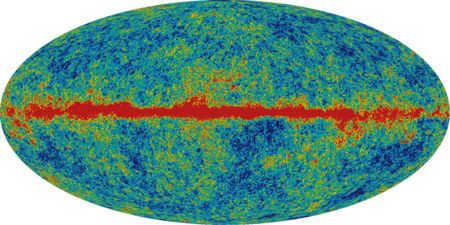
A visual representation (panorama) illustrating the uneven distribution of the residual radiation in different directions (horizontal band – light coming from the Milky Way galaxy). Warmer areas are depicted in shades of red, while cooler areas are represented by shades of blue.
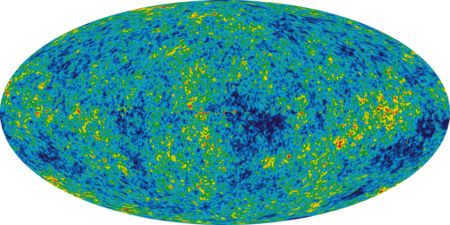
The relic anisotropy map (panorama) has been reconstructed, excluding the image of the Galaxy, the image of radio sources, and the image of dipole anisotropy. Hotter regions are represented by red colors, while cooler regions are represented by blue colors.
The spectrum of residual radiation permeating the Universe corresponds to the spectrum of radiation emitted by a completely black object with a temperature of 2.725 kelvin. Its peak occurs at 160.4 GHz (microwave radiation), which corresponds to a wavelength of 1.9 mm. This radiation is uniform to within 0.01% – the temperature fluctuation is approximately 18 µK. This value does not account for the dipole anisotropy (the difference between the coldest and hottest regions being 6.706 mK [9]) caused by the Doppler shift of the radiation frequency due to our own motion relative to the reference frame associated with the residual radiation. The dipole anisotropy corresponds to the movement of the solar system towards the Virgo constellation with a velocity of ≈ 370 km/s [10]. The redshift for the residual radiation is slightly above 1000 [11].
Dipole anisotropy [ edit edit code ] .
The observations have indicated that there is a significant emphasis on the dipole anisotropy within the relic emission. According to the principles of Doppler’s law, this phenomenon is interpreted as the result of the motion of the local group (which includes the Milky Way galaxy cluster) with a velocity of 627 ± 22 km/s in relation to the background relic emission. This motion occurs in the direction of l = 276 ± 3° , b = 30 ± 3° in galactic coordinates [12] [13]. However, there are alternative theories that can also provide an explanation for the prominent dipole anisotropy observed in the relic radiation [14].
Primary anisotropy [ edit correct code ] .
Polarization [ edit correct code ] .
The relict radiation exhibits polarization at a level of a few μK. Two distinct components, E-mode (gradient component) and B-mode (rotor component) [15], are observed, similar to the polarization of electromagnetic radiation. The E-mode can occur when the radiation passes through an inhomogeneous plasma due to Thompson scattering. On the other hand, the B-mode, which has a maximum amplitude of only 0.1 μK, does not arise from interaction with the plasma.
Secondary anisotropy [ edit edit code ] .
Analysis [ edit correct code ]
Relic radiation’s power spectrum (the distribution of energy on different angular scales, also known as multipoles) was determined using data from various observations, including WMAP (2006), Acbar (2004), Boomerang (2005), CBI (2004), and VSA (2004). The solid line represents the theoretical predictions.
Studying relic radiation to generate its maps, analyze its angular power spectrum, and derive cosmological parameters is a challenging and computationally intensive task. While calculating the power spectrum based on the map is theoretically straightforward, involving a Fourier transform that decomposes the background into spherical harmonics, incorporating noise effects in practice is difficult.
Specialized software packages are employed for data analysis:
- HEALPix (Hierarchical Equal Area isoLatitude Pixelization) is a software package utilized by the WMAP team.
- GLESP (Gauss-Legendre Sky Pixelization) is a package that was created as an alternative to HEALPix, involving scientists from Russia, Germany, England, and Taiwan.
Each of these packages utilizes a distinct format for storing the relic map and employs different processing approaches.
Weak multipoles [edit edit code]
- ↑ The term “relic radiation” is commonly used in Russian-language literature and was coined by the Soviet astrophysicist I. S. Shklovsky. (See I. S. Shklovsky, Universe, Life, Mind. Moscow: Nauka., 1987).
- ↑ Physics Today, 1950, No. 8, pp. 76
- ↑ Online Encyclopedia “Krugosvet”.
- ↑ Shmaonov T. A. Methodology of absolute measurements of the effective temperature of radio emission with low equivalent temperature // Instruments and Technique of Experiment. 1957. №1 С.83-86. 18.
- ↑ http://www.rian.ru/analytics/20061116/55698972-print.html
- ↑ http://don-beaver.livejournal.com/37544.html
- ↑ Official site of ESA Planck mission
- ↑ Communication on Astronet.ru website
- ↑ WMAP
- ↑The CMB dipole. The most recent measurement and some history. 1996
- ↑http://elementy.ru/news/430163 WMAP results
- ↑ Kogut, A.; et al. (1993). “Dipole Anisotropy in the COBE Differential Microwave Radiometers First-Year Sky Maps”. Astrophysical Journal419: 1-6. DOI:10.1086/173453. arΧiv:astro-ph/9312056.
- ↑http://antwrp.gsfc.nasa.gov/apod/ap090906.html
- ↑ Inoue, K.T. (2007). “Local Voids as the Origin of Large-Angle Cosmic Microwave Background Anomalies: The Effect of a Cosmological Constant”. Astrophysical Journal664 (2): 650-659. DOI:10.1086/517603. arΧiv:astro-ph/0612347.
- ↑http://cosmology.berkeley.edu/~yuki/CMBpol/CMBpol.htm
- ↑ Lewis, A. (2006). “Weak gravitational lensing of the CMB”. Physics Reports429: 1-65. DOI:10.1016/j.physrep.2006.03.002. Template:Arxiv.
This article contains information sourced from the “Relict radiation” page on the Russian Wikipedia.
Relict radiation (Latin. relictum – remnant), also known as cosmic microwave background radiation (from English. cosmic microwave background radiation), is the heat radiation that uniformly fills the Universe and originated during the primary recombination of hydrogen. It exhibits a high degree of isotropy and has a spectrum that resembles that of a black body with a temperature of 2.72548 ± 0.00057 K. [1]
The anticipation of relic radiation was predicted theoretically by G. Gamow as part of the Big Bang theory. Although several aspects of the original Big Bang theory have now undergone revisions, the fundamentals that enabled us to forecast the effective temperature of relic radiation remain unaltered. Experimentally, its existence was validated in 1965. Alongside the cosmological redshift, relic radiation is considered as one of the primary confirmations of the Big Bang theory.
The term relic radiation, which is commonly utilized in Russian-language literature, was coined by the Soviet astrophysicist I. S. Shklovsky [2].
Radiation’s Nature [ edit ]
As per the theory of the Big Bang, the early Universe consisted of a hot plasma made up of electrons, baryons, and photons that were constantly emitting, absorbing, and re-emitting. These photons engaged in continuous interactions with the other particles in the plasma, colliding with them and exchanging energy – this included Thomson [3] and Compton [3] scattering [source not stated 3568 days]. Consequently, the radiation existed in a state of thermal equilibrium with matter, and its spectrum matched that of a perfect black body.
Due to the continuous expansion of the Universe, the effective temperature of this radiation has gradually decreased to nearly absolute zero, currently measuring only 2.725 K.
Research History [ edit ]
Initial Serendipitous Discovery [ edit ]
In 1941, while examining the light absorption from the ξ Serpens star by CN molecules in the interstellar medium, Andrew McKellar observed [5] [6] that absorption lines were present not only for the molecule’s ground rotational state, but also for the excited state, with the intensity ratio of the lines corresponding to a CN temperature of approximately 2.3 K. This phenomenon remained unexplained at that particular time [7].
Prediction [ edit ]
In 1948, Georgi Gamow, Ralph Alpher, and Robert Hermann made a groundbreaking prediction based on their pioneering work on the hot Big Bang theory. They hypothesized the existence of relic radiation, which would serve as evidence for the early stages of the universe. Alpher and Hermann calculated that the temperature of this relic radiation should be around 5 K, while Gamow predicted a slightly lower value of 3 K[8].
Prior to this prediction, there were some estimates of the temperature of space. However, these estimates had several limitations. Firstly, they only measured the effective temperature of space and did not take into account the radiation spectrum following Planck’s law. Secondly, these estimates were influenced by our unique position at the edge of the Milky Way galaxy and did not consider the possibility of isotropic radiation. Additionally, if Earth were located elsewhere in the vast expanse of the universe, these estimates would have yielded significantly different results.
Background [edit]
In 1955, Tigran Aramovich Shmaonov, a graduate student radio astronomer at the Pulkovo Observatory under the supervision of the renowned Soviet radio astronomers S. E. Khaikin and N. L. Kaidanovsky, conducted measurements of radio emission from outer space at a wavelength of 32 cm. In his experiment, he successfully detected microwave noise emission [9]. Based on these measurements, it was concluded that the effective temperature of the background radio emission had an absolute value of 4 ± 3 K. Shmaonov observed that the radiation intensity remained constant regardless of the direction in the sky and the time. Upon completing his thesis defense, he published an article on this groundbreaking discovery in the non-astronomical journal Instrumentation and Technique of Experimentation [10].
Discovery [ edit ].
Gamow’s findings were not extensively debated. Nevertheless, Robert Dicke and Yakov Zeldovich managed to replicate them in the early 1960s.
In 1964, this inspired David Todd Wilkinson and Peter Roll, who were working with Dicke at Princeton University, to construct the Dicke radiometer for the purpose of measuring residual radiation.
In 1965, Bell Telephone Laboratories in Holmdale, New Jersey, conducted a project involving the construction of an instrument similar to the Dicke radiometer. This instrument was intended for use in radio astronomy and satellite communications experiments. During the calibration process, an unexpected result was obtained – the antenna had an excess noise temperature of 3.5 K, which could not be explained. Upon receiving a call from Holmdale, Dicke jokingly exclaimed, “Gentlemen, we have been preempted!”. After a thorough discussion, the teams from Princeton and Holmdale came to the conclusion that this temperature anomaly was caused by relic radiation. In recognition of their discovery, Penzias and Wilson were awarded the Nobel Prize in 1978.
Inhomogeneity investigation [edit]
In 1983, the initial trial, RELICT-1, was conducted to gauge the residual radiation from a spacecraft. In January 1992, based on the data analysis from the RELIKT-1 experiment, Russian scientists announced the detection of anisotropy in the residual radiation [11]. Shortly after, American scientists also proclaimed the discovery of fluctuations based on data from the COBE experiment [12]. In 2006, the Nobel Prize in Physics was awarded to COBE group leaders George Smoot and John Mather for this groundbreaking discovery, despite the fact that the Russian researchers had published their findings prior to the Americans [13] [14] [15] [16].
The spectrum of residual radiation from data obtained with the FIRAS instrument on board the COBE satellite (measurement errors are not visible in the scale of the figure)
The FIRAS far-infrared spectrophotometer on NASA’s Cosmic Background Explorer (COBE) satellite has achieved the most precise measurements of the relic emission spectrum to date. These measurements have confirmed its correspondence to the radiation spectrum of an entirely black body with a temperature of 2.725 K.
The American WMAP spacecraft has produced the most detailed map of relic radiation to date.
The Plank mission satellite of the European Space Agency was launched on May 14, 2009 [17] [18]. It was anticipated that the observations would continue for 15 months, with the potential for a 1-year mission extension. The analysis of the results from this experiment is expected to validate and refine the data obtained by WMAP.
Properties [ edit ]
A map (panorama) of the anisotropy of relic radiation is shown above. The horizontal bar represents the light from the Milky Way galaxy. In this map, red colors indicate hotter regions while blue colors indicate cooler regions. The data used to create this map was collected by the WMAP satellite.
Another map (panorama) of the anisotropy of relic radiation is displayed below. This map excludes the image of the Galaxy, image of radio sources, and image of dipole anisotropy. In this map as well, red colors represent hotter areas and blue colors represent cooler areas. The WMAP satellite provided the data for this map as well.
The spectrum of residual radiation throughout the Universe corresponds to the radiation spectrum of a completely black body with a temperature of 2.725 kelvin. The peak of this spectrum occurs at 160.4 GHz (microwave radiation), which corresponds to a wavelength of 1.9 mm. It exhibits isotropy to an accuracy of 0.01%, with the temperature standard deviation being approximately 18 μK. However, this value does not account for the dipole anisotropy, which refers to the difference between the coldest and hottest regions, measuring 6.706 mK [19]. This anisotropy arises due to the Doppler shift of the radiation frequency caused by our own velocity relative to the reference frame associated with the residual radiation. The redshift for the residual radiation slightly surpasses 1000 [20].
The energy density of the residual radiation amounts to 0.25 eV/cm3 [21] (4.005-10 -14 J/m3) or (400-500 photons/cm3 [22]).
Dipole anisotropy [ edit ]
Rephrasing of the text while keeping the HTML markup:
Dipole anisotropy [ modify ]
In 1969, scientists made an interesting discovery about the relic radiation. They found that there is a dipole component in the radiation, meaning that the temperature is slightly higher in one direction and slightly lower in the opposite direction. This is believed to be caused by the Doppler effect, which occurs when the Sun moves relative to the relic background. The Sun’s movement towards the constellation Leo at a speed of about 370 km/s is responsible for this effect. Additionally, the Sun’s orbit around the center of the Galaxy and its movement relative to the center of the Local Group of galaxies also contribute to the overall motion of the Local Group relative to the relic radiation. Based on current data, it is estimated that the Local Group moves at a speed of approximately km/s towards a specific point in the constellation Hydra.
There are other explanations that can also account for the prominence of the dipole component of the relic radiation [28].
Connection to the Big Bang [ edit ] .
Primary anisotropy [ edit ]
Polarization [ edit ]
The relic radiation exhibits polarization at a few μK level. E-mode (gradient component) and B-mode (rotor component) [29] are differentiated similar to the polarization of electromagnetic radiation. The E-mode may occur when radiation traverses through a non-uniform plasma due to Thompson scattering. The B-mode, with a maximum amplitude of only 0.1 μK, cannot be generated through interaction with the plasma.
The B-mode serves as an indication of the universe’s inflation and is determined by the density of primary gravitational waves. Detecting the B-mode is a challenging endeavor due to the uncertainty surrounding the noise level associated with this component of the relic radiation. Additionally, the B-mode is susceptible to distortion from weak gravitational lensing, which is stronger in the E-mode [30].
As of 2015, there have been no observational confirmations of the B-mode’s discovery. On March 17, 2014, researchers from the Harvard-Smithsonian Center for Astrophysics claimed to have detected a B-mode at r = 0.2 [31] [32] [33] [34] [35]. However, a more recent analysis (published on September 19, 2014) conducted by another team using data from the Planck Observatory suggested that the result could be entirely attributed to galactic dust [36].
Secondary anisotropy [ edit ]
Secondary anisotropy of the cosmic microwave background radiation occurs as the photons travel from the last scattering surface to the observer, encountering various obstacles such as scattering off a hot gas or passing through a gravitational potential [37].
When the photons of the cosmic microwave background radiation started to move freely, the majority of the matter in the Universe existed in the form of neutral hydrogen and helium atoms. However, recent observations of galaxies have revealed that the intergalactic medium is mostly composed of ionized material (as evidenced by multiple hydrogen absorption lines). This indicates that there was a period of reionization, during which some of the matter in the universe once again became ionized [38].
Scattering of microwave radiation occurs when photons interact with unbound charges, such as electrons, that are not confined within atoms. In a universe that is ionized, these charged particles are ejected from neutral atoms due to the presence of ionizing ultraviolet radiation. In the present day, the density of free charges is typically low enough in most regions of the universe that their impact on relic radiation is negligible. However, if the intergalactic medium experienced ionization during the early stages of expansion, when the universe was much denser than it is now, this would result in two significant consequences for the relic radiation:
- Small-scale fluctuations would be eliminated, similar to how the details of an object become blurred when viewed through fog.
- The polarization of relic radiation on large angular scales will exhibit anisotropy due to the process of scattering photons on free electrons, known as Thomson scattering. This anisotropy will also be correlated with temperature anisotropy.
Both the anisotropy of polarization and temperature have been observed by the WMAP space telescope. These observations suggest that the Universe was ionized during its early stages, with redshifts greater than 17. The exact source of this early ionizing radiation is still a subject of scientific debate. It is believed to include the light emitted by the very first stars, supernovae resulting from the evolution of these stars, and ionizing radiation originating from the accretion disks of massive black holes.
During the period between reionization and our observations of the relic radiation, two additional effects occurred that contribute to the fluctuations. The first effect is known as the Sunyaev-Zel’dovich effect, which involves the scattering of relic photons by a cloud of high-energy electrons, resulting in the transfer of energy from the electrons to the photons. The second effect is called the Sachs-Wolf effect, which causes a shift in the photon spectrum from the cosmic microwave background to either the red or violet region of the spectrum due to changes in the gravitational field.
These two effects are closely tied to the influence of structures in the late Universe, particularly when the redshift is less than or approximately equal to 1. On one hand, they contribute to the blurring of the relic spectrum as they overlap with the primary anisotropy. On the other hand, they provide valuable information about the prevalence and evolution of structures in the late Universe [37].
- DASI (Degree Angular Scale Interferometer) (USA) [39]
- South Pole Telescope (SPT, “South Polar Telescope” (SPT), “South Pole Telescope”) (USA) [40]
Analysis [ edit ]
Power spectrum of relic radiation (energy distribution on different angular scales, also known as multipoles. The spectrum is obtained from observational data: WMAP (2006), Acbar (2004) Boomerang (2005), CBI (2004), and VSA (2004). The pink region represents the theoretical predictions.
Obtaining maps, angular power spectrum, and cosmological parameters from the relic radiation requires complex and computationally challenging analysis. While the power spectrum calculation based on the map is a straightforward Fourier transform that decomposes the background into spherical harmonics, it is difficult to accurately account for noise effects.
Data analysis for this purpose typically relies on specialized packages:
- HEALPix (Hierarchical Equal Area isoLatitude Pixelization) – an application package utilized by the WMAP team.
- GLESP (Gauss-Legendre Sky Pixelization) – a package developed as an alternative to HEALPix, involving scientists from Russia, Germany, England, and Taiwan.
Each package employs a distinct relic map storage format and utilizes different processing methods.
Weak multipoles [ edit ]
Related Articles [ edit ]
Important Points [ edit ]
- ↑Fixsen, D. J. Determining the Temperature of the Cosmic Microwave Background // Astrophysical Journal. – 2009. -. -. — DOI:10.1088/0004-637X/707/2/916. – Bibcode: 2009ApJ. 707..916F . – arΧiv: 0911.1955.
- ↑Shklovsky I. S., Universe, Life, Mind. M.: Nauka., 1987)
- ↑ 3,03,1D.Y. Klimushkin, S.V. Grablevsky.Chapter 5. Relict radiation and the theory of the hot Universe, §5.3. Matter and radiation in the hot expanding Universe. Cosmology (2001). Checked May 11, 2013.
- ↑Abbott, B.Microwave (WMAP) All-Sky Survey. Hayden Planetarium (2007). Checked January 13, 2008.Archived from the original source on August 25, 2011.
- ↑A. McKellar Molecular Lines from the Lowest States of Diatomic Molecules Composed of Atoms Likely to Be Found in the Space Between Stars // Publications of the Dominion Astrophysical Observatory. – 1941. – Vol. 7. – P. 251. – Bibcode: 1941PDAO. 7..251P .
- ↑A. McKellarThe Challenges of Identifying Possible Molecules in Interstellar Lines // Publications of the Astronomical Society of the Pacific. – 1941. – Vol. 53,. – P. 233-235. – DOI:10.1086/125323. – Bibcode:1941PASP. 53..233M .
- ↑Zeldovich, J. B., Novikov, I. D.. The Structure and Evolution of the Universe. – Moscow: Nauka, 1975. – С. 156. – 736 с.
- ↑Physics Today, 1950, No. 8, pp. 76
- ↑Online Encyclopedia “Krugosvet”
- ↑ Shmaonov T. A. Methodology of measuring the effective temperature of low equivalent temperature radio emission // Instruments and Technique of Experiment. 1957. № 1 С.83-86. 18.
- ↑Strukov I. A. et al.New findings from the Relikt-1 experiment // Monthly Notices of the Royal Astronomical Society. – 1992. – Vol. 258. – P. 37P-40P.
- ↑Smoot G. F. et al.Analysis of the COBE differential microwave radiometer first-year maps // Astrophysical Journal, Part 2 – Letters. – 1992. – Vol. 396. – P. L1-L5.
- ↑ Missed Opportunities Analysis and Comments RIA Novosti Newswire
- ↑don_beaver – Relict and COBE: the overlooked Nobel prize
- ↑John Mather: "Relict had valuable results, but ours were superior".
- ↑Skulachev D., They were the pioneers.
- Official ESA Planck mission website
- Astronet.ru website
- WMAP
- WMAP satellite results
- Relict radiation in the Encyclopedia Krugosvet
- Microwave Background Radiation in the Encyclopedia of Physics
- Wright E. L. History of the CMB Dipole Anisotropy
- Chernin A. D., Stars and Physics, Moscow: Nauka, 1984, pp. 152-153.
- Kogut, A.; et al. (1993). “Dipole Anisotropy in the COBE Differential Microwave Radiometers First-Year Sky Maps”. Astrophysical Journal419: 1-6. DOI:10.1086/173453. arΧiv: astro-ph/9312056.
- APOD: 2009 September 6 – CMBR Dipole: Speeding Through the Universe.
- Where are we going?
- ↑ Inoue, K.T. (2007). "The Effect of a Cosmological Constant on Local Voids: Exploring the Origins of Large-Angle Cosmic Microwave Background Anomalies". Astrophysical Journal664 (2): 650-659. DOI:10.1086/517603. arΧiv: astro-ph/0612347.
- ↑CMB Polarization
- ↑ Lewis, A. (2006). "Investigating Weak Gravitational Lensing of the Cosmic Microwave Background". Physics Reports429: 1-65. DOI:10.1016/j.physrep.2006.03.002. arΧiv: astro-ph/0601594.
- ↑Clavin, Whitney.NASA Explores the Birth of the Universe through Technological Advancements (English) . NASA (March 17, 2014). Checked March 18, 2014.
- ↑Dennis Overbye[en] .Discovery of Waves in Space Supports Key Theory of the Big Bang (English) . The New York Times (March 17, 2014). Checked March 18, 2014.
- ↑Jonathan Amos.Big Bang gravitational wave discovered. BBC Russian Service (March 18, 2014). Checked March 18, 2014.
- ↑David A. Aguilar, Christine Pulliam.First Direct Evidence of Cosmic Inflation (English) . Harvard-Smithsonian Center for Astrophysics (March 17, 2014). Checked March 17, 2014.
- ↑Ira Solomonova.Almost unbelievable! Physicists have proven the existence of gravitational waves for the first time. Quick Slon. Slon.ru (March 17, 2014). Checked March 17, 2014.
- ↑Ivanov Igor.New data from Planck Observatory closes overly optimistic interpretation of results BICEP2. "Elements.ru" (September 21, 2014).
- ↑ 37,037,1Gobunov D. S., Rubakov V. A.Introduction to the theory of the early Universe: Cosmological perturbations. Inflationary theory. – M .: KRASAND, 2010. – С. 276-277. – 555 с. – ISBN 978-5-396-00046-9. (Checked April 17, 2013)
- ↑Gobunov D. S., Rubakov V. A. Introduction to the Theory of the Early Universe: Theory of the Hot Big Bang. – M .: LKI, 2006. – С. 35-36. – 552 с. – ISBN 978-5-382-00657-4.
- ↑A radio telescope in Antarctica has detected polarization of relic radiation // 21.09.2002.
- ↑The first quanta of the Big Bang echo have been captured by an American telescope in Antarctica // February 28, 2007.
References [ edit ]
The enigmatic disparity between theory and empirical evidence regarding the “melody” of the cosmic microwave background bears resemblance to the manner in which instruments in a grand orchestra produce dissonance. The veracity of our observations is still uncertain, leaving open the possibility that the universe possesses a greater intricacy than previously conceived.

Envision an incredibly expansive symphony orchestra performing for a span of 14 billion years. Initially, the music may sound harmonious. However, upon closer listening, something seems amiss. It appears that the tuba and the double bass are playing distinct melodies! Researchers have detected a comparable discordance in the cosmic music played by the microwave background radiation, commonly known as relic radiation, which provides insights into the early origins of the Universe.
Following the occurrence of the Big Bang, the energy density of the universe experienced chaotic fluctuations as a result of the laws of quantum mechanics. Over time, these fluctuations grew and transformed into the clusters of galaxies that exist today. The nature of these fluctuations can be likened to sound waves, and the vibrations emitted during this time, approximately 14 billion years ago, have been preserved in relic radiation. By examining the temperature fluctuations in this relic radiation, we are able to observe a visual representation of the “sound” that reverberated throughout space.
INTRODUCTION: CELESTIAL DISCORDANCE
- The inflationary model, incorporating the λ-member and cold dark matter, has been successful in explaining numerous characteristics of the Universe. However, upon scrutinizing certain observational data, significant issues have been identified.
- Upon studying the cosmic microwave background, certain uncertainties have arisen. Astronomers have likened the spatial fluctuations of this ancient radiation to the various instruments in an orchestra. In this analogy, it becomes apparent that the double bass and tuba in the “celestial orchestra” are not only playing out of tune but also too softly.
- It is important to note that observational data can be prone to distortion, such as the interference caused by interstellar gas near the boundaries of the solar system. Even so, these discrepancies cast doubt on some of the conclusions drawn from the inflationary theory.
The analysis of relic radiation fluctuations can be done by breaking them down into individual harmonics, similar to different instruments in an orchestra. Interestingly, certain harmonics appear to be quieter than expected and even play a different melody. This discrepancy suggests that either the standard cosmological model is flawed or there are issues with the observed data.
The $I\Lambda CDM$ model, also known as the Inflationary Lambda Cold Dark Matter model, is named after its three main components: inflation, the cosmological constant represented by the Greek letter lambda ($\Lambda$), and cold dark matter, which is often referred to as hidden mass.
According to this model, inflation was a rapid expansion that occurred shortly after the universe was formed and ended with a burst of radiation, resulting in a large and matter-filled universe that is nearly homogeneous. The $I\Lambda CDM$ model also provides an explanation for the lack of complete homogeneity in the universe, attributing it to the amplification of random quantum fluctuations in energy density to the scale of galaxy clusters and beyond.
The model predicts that following the conclusion of inflation, the gravitational force caused the compression of regions with high density, leading to the creation of galaxies and their clusters. This process was aided by the presence of cold dark matter, which formed massive clouds that can only be detected through their gravitational impact. The cosmological constant ($\Lambda$) is an unusual form of antigravity that is responsible for the current acceleration of cosmological expansion (see “Cosmic Enigma,” In the World of Science, No. 12, 2004).
Ancient light
The theory effectively accounts for numerous characteristics of the cosmos, however, issues arose when astronomers observed irregularities in the temperature fluctuations of the ancient radiation. For cosmologists, this relic radiation serves as a crucial tool in examining the most expansive aspects of the Universe – the oldest light that emerged a mere few hundred thousand years following the Big Bang. During this period, the Universe underwent rapid expansion and cooling, causing the dense, opaque plasma to transform into transparent gas. Over the course of 14 billion years, relic radiation offers us a glimpse into the early stages of the Universe, presenting us with a snapshot at its grandest scale from the furthest corners of existence.
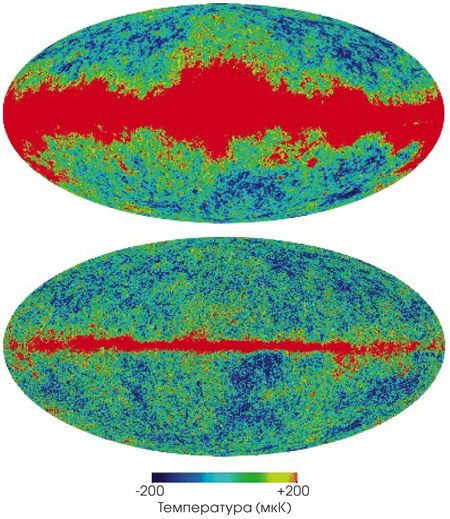
The microwave image of the sky was captured by the WMAP satellite in the K-band (23 GHz, top), the W-band (94 GHz, bottom), and three additional bands of the spectrum (not shown). The complete celestial sphere is depicted as an ellipse, similar to a geographical map. The horizontal red area represents emission from the Milky Way. This foreground radiation varies as we transition from one spectrum band to another, allowing us to distinguish it from the background relic radiation.
In 1992, the Cosmic Background Explorer (COBE) satellite made its initial measurements of these variations; subsequently, the Wilkinson Microwave Anisotropy Probe (WMAP) satellite assisted in generating detailed maps.
THE MELODIOUS TONES OF THE COSMOS
When scientists mention that certain components of the cosmic microwave background are not in harmony, what exactly do they mean and how do they determine this?
Scientists studying relic radiation examine temperature fluctuations observed in all directions of the celestial sphere. They analyze these fluctuations using mathematical functions known as spherical harmonics. Picture a violin string that can produce an infinite range of notes, even if you don’t change its length by pressing it against the fingerboard. These notes can be defined by the number of points (nodes) on the string, excluding the ends, which remain stationary when the string is played.
The primary pitch, or primary mode, is the lowest frequency that does not have any points of zero displacement (n=0). In this scenario, all points on the string, with the exception of the endpoints, oscillate in perfect synchronization (see diagram below).

The initial overtone of a note with a single node (n=1) positioned in the center is referred to as the first harmonic overtone. In this instance, one half of the string oscillates in one direction while the other half oscillates in the opposite direction (as shown in the diagram below). When singing the notes “do-re-mi-fa-sol-la-si-do,” the final “do” corresponds to the first harmonic overtone of the initial “do’s” fundamental tone. The second harmonic overtone is produced when there are two evenly spaced nodes, and this pattern continues for subsequent harmonics.

Harmonics can be used to break down any complex string oscillation. Take the oscillation depicted below, for instance. It can be seen as a combination of the fundamental mode (n=0) and the fourth harmonic (n=4). It’s worth noting that the fourth harmonic has a lower amplitude, resulting in shallower waves, compared to the fundamental tone. This is analogous to instrument #4 playing at a quieter volume than instrument #0 in an orchestra. Generally, the more complex the string oscillation, the greater the number of harmonics it needs to be broken down into.
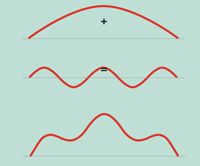
Spherical harmonics are represented by YLM and they indicate the vibration modes of a spherical “drum”. As the sphere’s surface is two-dimensional, we require two numbers, $l$ and $m$, to describe these modes. For each value of $l$ (which can range from 0, 1, 2, and so on…), the values of m can span from $-l$ to $l$. A multipole is formed by the combination of all the notes with the same value of $l$ but different values of m, each having its own amplitude (referred to as loudness in acoustic terms).
Unfortunately, it is not feasible to illustrate spherical harmonics in the same way we illustrated a violin string. Nevertheless, we can create a visual representation of the sphere by utilizing a color scheme to indicate whether a particular region has a temperature that is either above or below the average. (The configuration of this representation resembles a projection of a sphere onto a two-dimensional plane, similar to a geographical map of the Earth.) A monopole with $l=0$ corresponds to a spherical drum where all points vibrate in perfect synchronization (see figure below).

The motion of a dipole ($l=1$) can be visualized as half of its surface moving outward (red) and half moving inward (blue). There are three possible dipole modes ($m = -1, 0, 1$) in three perpendicular directions of space (left – right, up – down, from us – to us).
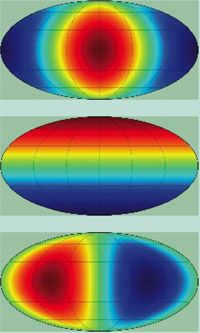
The green regions exhibit a moderate temperature; these nodal lines resemble those of a violin string. As the value of l increases, the number of nodal lines also increases.
A quadrupole ($l=2$) comprises five modes, each exhibiting a more intricate pattern of temperature variation on the sphere (refer to the Figure below).

It is possible to express any pattern of temperature fluctuation on a spherical surface as a combination of spherical harmonics, similar to how a violin string vibration can be expressed as a combination of harmonic vibrations. In this combination, each spherical harmonic has its own strength, which represents the contribution of that particular harmonic to the overall pattern, or how loudly this “space orchestra instrument” plays.
The theory’s predictions are most easily observed in the breakdown of temperature fluctuations into a spectrum using spherical harmonics. This is similar to the breakdown of a musical sound into individual notes (see box “HARMONICS OF HEART MUSIC”). Prior to the formation of galaxies, density fluctuations can be thought of as sound waves in the Universe. If the concept of breaking down into separate modes seems perplexing, think of it like an orchestra: each mode is a different instrument, and the complete temperature map of the celestial sphere is the collective sound of the entire orchestra.
One of the primary predictions of inflation theory regarding the fluctuations of relic radiation is their statistical isotropy. This means that the distribution of fluctuations across the sky should not exhibit any preferred direction – whether it be one that was previously known (such as the direction of the Earth’s axis) or determined by the radiation itself.
The inflation theory also suggests that the amplitude of each mode (comparable to the volume of each instrument in an orchestra) should be random within a certain range of possible values. In particular, the probability distribution takes the form of a bell-shaped curve known as the Gaussian distribution. In this case, there is a most probable average amplitude, which represents the peak of the curve. However, there are also amplitudes that deviate from this average, with a lower probability as the difference increases. Each mode has its own Gaussian distribution, with the width of the bell indicating the amount of power (or sound) attributed to that particular mode.
Inflation theory proposes that the amplitudes of all modes should have a Gaussian distribution with approximately equal widths. This is because inflation, which causes the universe to expand exponentially, erases any characteristic scale, similar to smoothing out a cosmic iron. As a result, the power spectrum that emerges is referred to as “flat” due to its absence of distinctive features. However, modes that originated either at the start or end of inflation may exhibit notable deviations from the flat spectrum.
Missing Records
The subsequent highest frequency ($l=1$) is the dipole, which exhibits a greater temperature in one hemisphere and a lesser temperature in the opposite hemisphere. The dipole originates from the Doppler effect as the solar system moves in relation to the relic; in the direction of the Sun’s movement, the celestial sphere seems marginally hotter.
Generally speaking, the variation for each value of $l(0, 1, 2. )$ is referred to as a multipole of order $l$. Any spherical map, whether it be the temperature of a remnant or the topography of the Earth, can be broken down into separate multipoles. In our temperature variation map, multipoles of lower order represent extensive regions – “oceans” and “continents”. Multipoles of higher order consistently represent progressively smaller regions – mountains and valleys, hills and ravines that are visible against the backdrop of larger structures. The entire intricate topography is the sum of the individual multipoles.
When examining ancient maps, each individual $l$ has a magnitude $C_l$. In other words, this represents the average altitude and depth of the mountains and valleys associated with that particular $l$, or the average intensity of a specific instrument in an orchestra. The complete collection of magnitudes for all potential values of $l$ is known as the angular power spectrum. Scientists depict it as a graph that commences at $C_2$, as the true data regarding the ancient fluctuations begins at $l=2$. The visual representation “Enigmas from WMAP” exhibits the angular power spectrum measured by the WMAP satellite and the $I\Lambda CDM$ model forecast that most accurately aligns with these observations. The measured magnitudes of the two multipoles with the smallest $l$ values, $C_2$ and $C_3$, referred to as the quadrupole and octupole, are significantly lower than the model projections. The deficiency in power in multipoles with small $l$ was initially identified by the COBE team and recently confirmed by WMAP experts. In terms of geography: the largest continents and oceans inexplicably turned out to be shallow and low. In terms of music: the sounds produced by the double bass and tuba are barely audible.
The impact becomes even more pronounced when we consider the angular correlation function $C(\theta)$ instead of the spherical function amplitude ($C_l$). If we imagine studying two points in the sky that are separated by an angle $\theta$ and compare whether they are both hotter (or colder), or if one is hotter and the other colder than the average temperature of the sky. The function $C(\theta)$ represents the level of correlation between temperature deviations, averaged over all possible pairs of points on the sky that are separated by an angle of $\theta$. Observations demonstrate that $C(\theta)$ is close to zero for angles larger than approximately 60°; in other words, fluctuations in directions that are more than 60° apart are not correlated. This further suggests that a universe created by inflation would lack low notes.
The absence of broad-angle correlations was initially observed by COBE and subsequently confirmed by WMAP. The fact that $C(\theta)$ is small for large angles implies that not only are $C_2$ and $C_3$ small, but also that the ratio of the first few amplitudes, at least up to $C_4$, is abnormal. The weakness of the power spectrum at large angles contradicts all classical models of inflation.
There are three potential explanations. First, this unusual result could simply be a statistical anomaly. For example, the uncertainty in the data may be greater than estimated, which would reduce the reliability of the observations. Second, correlations may have arisen during the analysis of the data obtained by WMAP if the data processing was not conducted with sufficient care. Finally, it could indicate a flaw in the theory.
Enigmatic positioning
In order to determine whether the theory deviates from observations, several groups of scientists decided to analyze not only the values of $C_l$, which represent the amplitude of the corresponding modes, but also the orientation data for each multipole. For instance, a dipole indicates the direction from the “cool” to the “warm” half of the sky. Higher order multipoles provide even more directional information. If the differences in amplitudes are simply due to chance, then the directional information derived from the same data should align with the theory’s predictions. However, this turned out to not be the case.
In 2003, Angelica de Oliveira-Costa and Max Tegmark from the University of Pennsylvania, Matias Zaldarriaga from Harvard University, and Andrew Hamilton from the University of Colorado at Boulder observed that the principal axes of the quadrupole and octupole modes are very similar in direction and have a lower amplitude. In fact, most inflationary models predict that these modes should have no correlation.
In 2003, a team of researchers led by Hans Kristian Eriksen at the Norwegian University of Oslo made a fascinating discovery. They conducted a study in which they divided the sky into various pairs of hemispheres and analyzed the fluctuations in amplitude on opposite sides. Surprisingly, their findings contradicted the widely-accepted inflationary cosmology theory. They observed that many pairs of hemispheres exhibited significant differences in the power spectrum. However, the most astonishing revelation was that the pair of hemispheres with the greatest divergence were precisely separated by the ecliptic, which is the plane that represents the Earth’s orbit around the Sun.
This was the initial sign that the variations in the relic radiation, which had been believed to be primarily cosmological and, although with some mixture of irregularities of galactic radiation, were actually significantly “tainted” by radiation from the solar system.
Meanwhile, one of us (Starkman), together with Craig Copi and Dragan Huterer of Western Reserve University in Cleveland, OH, devised a novel approach to represent the solar system radiation. Ohio, devised a novel approach to represent the fluctuations of relics in vector form. This allowed us (Schwartz, Starkman, Cope and Huterer) to test the hypothesis that the relic fluctuations should not be correlated with specific directions in the Universe.
In 2004, we made additional discoveries that supported the findings of Oliveira-Costa and her team. Several vectors were unexpectedly found to be aligned closely with the ecliptic plane and in close proximity to the equinoxes, which are the points where the Earth’s equator intersects with the celestial sphere. Furthermore, these same vectors exhibited a suspiciously similar orientation to the direction of the Sun’s movement in the Universe. Additionally, there was a vector that was remarkably aligned with the plane of the Local Supergroup of galaxies, known as the supergalactic plane.
Each of these occurrences has a likelihood of happening randomly that is no greater than 1 in 300. And even though they are not entirely unrelated to one another, the likelihood of all of them happening together by chance is known to be less than 1 in 10,000 (not considering the peculiar characteristics of low-order multiplets).
There are concerns among researchers that the data obtained from complete maps of the “relic” sky may not be entirely reliable. While using these maps can offer advantages, it is possible that the data on the temperature of relic radiation along the Milky Way band may be questionable. In order to determine the temperature of the relic in a specific area of the sky, it is necessary to subtract the contribution made by our own Galaxy. However, there is uncertainty surrounding the reliability of the methods used by the WMAP team and other research groups. In fact, the WMAP team themselves advised against using their full sky map, and instead chose to analyze regions outside of the Milky Way. When Princeton’s Uros Seljak and Anze Slosar of the University of Ljubljana excluded the Milky Way band from their analysis, they discovered that the probability of matching certain directions decreased in some wavelength bands and increased in others. Our subsequent research has indicated that the observed correlations cannot be solely explained by the influence of the Galaxy. It would be unusual if the effects of the Milky Way were the sole explanation for the orientation of relic radiation in the plane of the solar system.
WMAP ENIGMAS
The WMAP spacecraft sends information comprising three enigmas
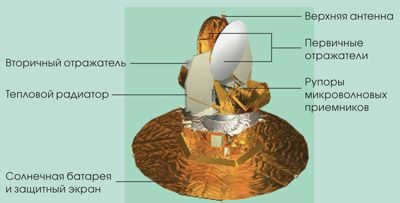
1. THE ANGULAR POWER SPECTRUM
The majority of WMAP measurements are in strong accordance with the prediction of the inflationary model featuring lambda member and cold dark matter. However, there is a discrepancy in the initial two observational data points (for the quadrupole and octupole) as they exhibit unusually low power.
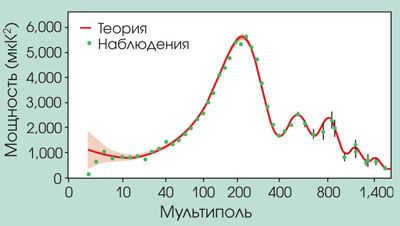
2. ANGULAR CORRELATION FUNCTION
The correlation function is a way to analyze the relationship between data points that are separated by a specific angle on the sky. Ideally, the curves of the COBE and WMAP data should have matched a theoretical curve. However, what actually occurs is that they approach zero at separations larger than 600.
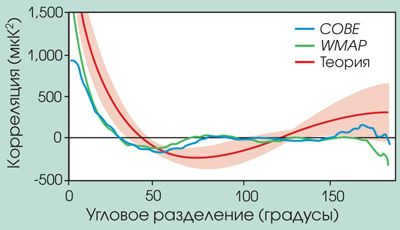
3. ORIENTATION OF THE FIRST TWO MULTIPOLES
The alignment of the quadrupole (blue) and octupole (red) is not random; instead, they exhibit a gravitational pull towards the equinoxes (empty circles) and the direction of motion of the solar system, as defined by the dipole axis (green dots). Additionally, their axes are closely aligned with the ecliptic plane (purple line). Interestingly, two of them also lie within the plane of the Super Galaxy, which encompasses our Galaxy, neighboring star systems, and their clusters (orange line). The odds of these alignments occurring randomly are less than 1/10000.
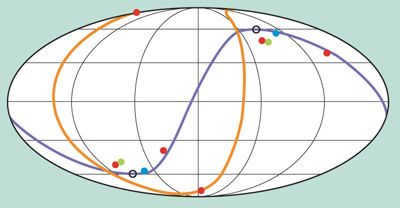
The relationship between the microwave background and the Solar System becomes even more evident when we consider the angular power spectrum. Aside from the lower amplitude at small $l$, there are three additional points ($l=22,~ l=40 ~ l=210$) where the observed power spectrum significantly diverges from what is predicted by the best-fit $\Lambda CDM$ model. While these variations were widely known, it went unnoticed by most cosmologists that the three deviations also align with the ecliptic.
There are two possible explanations for the correlation between the low modes of the relic and the structure of the solar system. The first explanation is that there was a mistake in the design of the WMAP instruments or an error in the analysis of the data collected, known as a systematic error. However, the WMAP team conducted extensive cross-checking of their instruments and were very careful in their analysis, making it unlikely that false correlations could have occurred. Additionally, similar correlations were found in the maps obtained by the COBE satellite, which used completely different instruments and analysis methods.
Are you ready to review the theory again?
Initially, the detection of a local distortion in the relic data appeared to be a potential solution to the mystery surrounding the weakness of its large-scale fluctuations. However, it actually complicates the issue further. After subtracting the radiation contribution from hypothetical foreground objects, the remaining cosmological contribution is likely to be even smaller than previously believed. (Any alternative conclusion would require an unlikely but precise mutual compensation between the cosmological contribution and our assumed foreground source.) Consequently, it becomes even more challenging to argue that the absence of modes with small $l$ in the power spectrum is merely a result of chance. It appears that inflation theory has reached a stalemate.
The discovery that the relic fluctuations on large scales are not as strong as anticipated has significant implications for our understanding of the early universe. It may require us to reassess our current theories. While alternatives to classical inflation theory are available, they may not be as appealing. One possibility is to modify the existing inflation model so that it aligns with the observed power spectrum on large scales. However, such modifications can diminish the elegance of the original model, similar to the introduction of additional epicycles in Ptolemy’s theory, which ultimately led to its downfall.
The structure of the cosmos is intricate. If the Universe is finite and twisted in a pretzel-like manner, the vibrational patterns within it would be significantly distinct. We could easily discern the shape of the Universe, much like distinguishing the sound of a church bell from the howling of the wind. In this scenario, the deeper tones, representing large-scale fluctuations, would be particularly sensitive to the shape and size of the Universe. It is possible for our Universe to possess a complex topology, but be greatly affected by inflation to the point where all the topological characteristics have extended beyond the visible horizon and become nearly indistinguishable.
Additional information obtained from the WMAP satellite, including data on the polarization of radiation, will aid in the identification and differentiation of foreground sources. The upcoming launch of the Planck Observatory by the European Space Agency in 2007 will provide even more precise measurements of relict radiation across a broader range of frequencies and with greater angular resolution compared to the WMAP. While the improved angular resolution may not fully unravel the enigma of low-frequency modes, the ability to observe the sky in various microwave “colors” will enable us to more accurately rectify systematic errors and account for foreground objects. Excitingly, cosmological research continues to yield unexpected findings, and we eagerly anticipate new discoveries.
- Relict radiation (Latin: relictum – remaining) or cosmic microwave background radiation is the thermal radiation that fills the Universe uniformly and originated during the epoch of primary recombination of hydrogen. It exhibits a high level of isotropy and has a spectrum that resembles that of a perfect black body with a temperature of 2.72548 ± 0.00057 K.
The theoretical prediction of the existence of relic radiation was made by Georgi Gamow as part of the Big Bang theory. Although several aspects of the original Big Bang theory have been revised, the fundamental principles that allowed for the prediction of the effective temperature of relic radiation remain unchanged. Experimental evidence confirming its existence was obtained in 1965. Together with the cosmological redshift, relic radiation is considered one of the primary validations of the Big Bang theory.
Related concepts
Dark matter in astronomy and cosmology, as well as in theoretical physics, is a speculative type of matter that does not produce electromagnetic radiation and does not directly interact with it. This unique characteristic of dark matter makes it challenging, and perhaps even impossible, to observe directly.
Hidden mass – the dilemma that arises when the observed behavior of visible astronomical objects contradicts the calculations made using only these objects and the laws of celestial mechanics.
Gravitational waves – alterations in the gravitational field that propagate in wave-like patterns. They are generated by moving masses but exist independently from them once emitted. Mathematically, they are linked to disturbances in the fabric of space and time and can be described as “ripples” in the space-time continuum.
The Expansion of the Universe is a phenomenon characterized by the nearly uniform and isotropic expansion of outer space throughout the entire Universe. This is deduced from the cosmological redshift that is observed from Earth.
The Inflationary model of the Universe (from the Latin word “inflatio” meaning “bloating”) is a hypothesis that explains the physical conditions and mechanisms governing the expansion of the Universe during the early stages of the Big Bang, specifically at temperatures exceeding 1028 K. It suggests that there was a period of rapid expansion that was significantly faster than what is predicted by the standard model of the hot Universe.
Citations in the literary works
It appears probable that the initial traces have already been discovered. We have previously discussed the chemical evolution of the Universe, its continuous enrichment with heavy elements that are formed through nucleosynthesis within stars – both stationary and exploding. Over billions of years, there has been a process in which cosmic matter has been enriched with helium at the expense of hydrogen. However, a question arises: can the origin of all cosmic helium be explained solely by this process? The answer is no. If that were the case, the brightness of distant galaxies would be significantly greater than what is actually observed. This implies that the majority of cosmic helium (as well as deuterium) was formed during the pre-stellar stage of the Universe’s evolution. Calculations indicate that this occurred when the density of the Universe was close to that of a nucleus and the temperature was in the billions of kelvins. This would mean that the age of the Universe was only a few minutes! Thus, although indirectly, we can gain insight into an era when the Universe was hundreds of thousands of times younger than during the era of “unglueing” relic radiation, by examining actual astronomical observations of galaxies.
During the mid-20th century, the field of cosmology (not to be confused with cosmetology) had access to a relatively limited amount of data. And when the available data is insufficient, a plethora of competing hypotheses emerge, each one ambitious and clever. In the 1940s, a group of physicists led by Georgy Gamow, an American of Russian descent, proposed the hypothesis of relic cosmic radiation. This hypothesis was built upon the earlier work of Georges Lemaître, a Belgian physicist and priest, who published his findings in 1927. Incidentally, Lemaître is widely regarded as the pioneer of Big Bang cosmology. However, it was American physicists Ralph Alpher and Robert Herman who first calculated the expected temperature of relic radiation in 1948. Their calculations were based on three fundamental principles:
Continuation of Related Concepts
In cosmology, there is a theoretical form of energy known as dark energy. This energy is not yet proven, but is included in mathematical models of the universe to explain why the universe is expanding at an accelerating rate.
Another concept related to dark energy is ΛCDM, which stands for Lambda-Cold Dark Matter. This is the prevailing cosmological model that describes our universe as flat and filled with different components, including dark energy (represented by the cosmological constant Λ in Einstein’s equations), cold dark matter, and ordinary baryonic matter. According to this model, the age of the universe is estimated to be 13.75 ± 0.11 billion years.
Relativistic jets, also known as relativistic jet streams, are powerful streams of plasma that shoot out from the central nuclei of celestial bodies such as active galaxies, quasars, and radio galaxies. It was in 1918 when the renowned astronomer Heber Curtis made the groundbreaking discovery of the first-ever relativistic jet. Later on, the brilliant physicist and philosopher Stephen Hawking was able to provide compelling evidence that these emissions indeed originate from hypothetical black holes.
A quasar is a remarkable class of celestial objects that rank among the most luminous entities in the observable Universe. The term “quasar” in English is derived from the combination of the words “quasi-stellar” (meaning “almost star-like”) and “radio source,” thus literally translating to “star-like radio source.”
A black hole is an area in space-time that has such strong gravitational pull that even objects moving at the speed of light, including particles of light itself, cannot escape from it. The boundary of this region is known as the event horizon, and its size is referred to as the gravitational radius. In the case of a spherically symmetric black hole, this radius is equivalent to the Schwarzschild radius.
Cosmological (metagalactic) redshift is observed in all distant sources such as galaxies and quasars. It is a decrease in the frequency of emitted light, which is explained as the result of these sources moving away from each other and from our own Galaxy. This movement is understood as the nonstationary expansion of the Metagalaxy.
X-ray astronomy is a field of study within the larger discipline of astronomy, focusing on the analysis of cosmic objects through their emission of X-rays. X-rays, in this context, refer to electromagnetic waves with energy levels typically ranging from 0.1 to 100 keV (or 100 to 0.1 Å). Unlike optical photons, X-ray photons possess significantly higher energy levels, making them ideal for detecting and analyzing matter that has been heated to extreme temperatures. Notable sources of X-ray radiation include black holes, neutron stars, quasars, and various other exotic celestial bodies.
Gravitational-wave astronomy is an area of study within the field of astronomy that focuses on the investigation of celestial objects through the analysis of their gravitational radiation and the observation of its impact on gravitational wave detectors. This branch of observational astronomy is experiencing rapid growth and utilizes gravitational waves, which are the minute disturbances in the fabric of space-time as theorized by Einstein’s general theory of relativity, to gather information about objects such as black holes and neutron stars.
A neutron star is a celestial body that can form as a result of stellar evolution. It consists mostly of a core made up of neutrons, surrounded by a thin crust of heavy atomic nuclei and electrons. Neutron stars have masses similar to that of the Sun, but their radius is much smaller, typically only 10-20 km. This means that the average density of a neutron star is several times greater than that of an atomic nucleus.
On the other hand, a primary black hole is a hypothetical type of black hole that is believed to have formed during the initial expansion of the Universe, rather than from the gravitational collapse of a massive star. The exact nature and characteristics of primary black holes are still largely unknown.
A pulsar is a celestial object that emits radio, optical, X-ray, and/or gamma-ray radiation in regular bursts. These bursts are caused by the rotation of a neutron star with a tilted magnetic field, which modulates the radiation reaching Earth.
The Big Bang is a widely accepted cosmological model that explains the early evolution of the Universe. It describes the moment when the Universe began expanding from a singular state.
A gamma-ray burst is a massive release of cosmic energy that occurs explosively in distant galaxies in the most intense part of the electromagnetic spectrum. These bursts are the most luminous electromagnetic events that happen in the Universe. The duration of a typical gamma-ray burst is a few seconds, but it can range from milliseconds to an hour. Following the initial burst, there is often a long-lasting “afterglow” emitted at longer wavelengths, such as X-ray, UV, and optical.
The acceleration of the expansion of the Universe refers to the decrease in the brightness of highly distant “standard candles” (Type Ia supernovae) that were discovered in the late 1990s. This decrease is interpreted as evidence for an acceleration in the expansion of the Universe.
The Doppler effect refers to the change in frequency and wavelength of radiation that is perceived by an observer or receiver due to the motion of the radiation source and/or the motion of the observer. This phenomenon is named after the Austrian physicist Christian Doppler.
The theory of general relativity predicts a range of effects. In weak gravitational fields and with slowly moving bodies, it reproduces the predictions of Newtonian gravitational theory. However, it is in strong fields, such as those found in compact astrophysical objects, and/or with relativistically moving bodies and objects, that the distinctive effects of general relativity become apparent. These effects include the deflection of light. In the case of weak fields, the general theory of relativity also provides predictions.
Hawking radiation refers to the theoretical process in which a black hole emits a range of elementary particles, primarily photons, and is named after Stephen Hawking. This radiation is a key element in the scientific understanding of the potential decay or evaporation of small black holes, which could potentially be created during experiments at the Large Hadron Collider (LHC). It is this phenomenon that forms the basis for the concept of a singular reactor, a device that could harness energy from a black hole via Hawking radiation.
A supermassive black hole is an exceptionally large black hole with a mass ranging from 105 to 1010 times that of our sun. As of 2014, supermassive black holes have been observed at the center of numerous galaxies, including our own Milky Way.
A compact star is a type of star that possesses a significantly higher density than a typical star. Examples of compact stars include.
Light pressure, also known as electromagnetic radiation pressure, is the force exerted by light (and other forms of electromagnetic radiation) on the surface of an object.
Gravitational instability, specifically the Jeans instability, refers to the gradual amplification of velocity and density fluctuations in matter over time due to the influence of gravitational forces (or disturbances).
The process of gravitational collapse refers to the extremely rapid compression of massive objects due to the influence of gravitational forces. This phenomenon is particularly relevant for stars with a mass exceeding three times that of the Sun. Once these stars have depleted their fuel for nuclear reactions, they lose their structural integrity and begin to contract towards their center at an accelerating rate. Should the internal pressure counteract the gravitational compression, the central region of the star will transform into an incredibly dense neutron star.
An exotic star is a theoretical compact celestial object made up of not just electrons, protons, neutrons, and muons like regular and neutron stars, but also other forms of matter. The collapse of such a star is prevented by the pressure of degenerate gas or other quantum effects. Examples of exotic stars include quark stars (which are composed of quark matter, including strange quarks) as well as stars composed of hypothetical particles whose existence has not yet been confirmed (such as neutrinos).
Neutrinos (from the Italian word “neutrino” meaning “neutron” and the diminutive form of “neutrone” meaning “neutron”) are a group of six neutral fundamental particles with half-integer spin. They only participate in weak and gravitational interactions and belong to the lepton family.
The Oppenheimer-Volkov limit is the maximum mass that a neutron star can have without collapsing into a black hole. If the mass of the neutron star is below this limit, the pressure of the degenerate neutron gas can counterbalance the gravitational forces. However, the Oppenheimer-Volkov limit also serves as a minimum mass for black holes formed during stellar evolution.
The hot Universe model is a cosmological model that describes the early stages of the Universe as a dense, hot plasma consisting of elementary particles. This model then predicts that the Universe undergoes adiabatic cosmological expansion.
An X-ray pulsar is a celestial object that emits variable X-ray radiation in the form of periodic pulses that reach Earth.
The gravitational radius, also known as the Schwarzschild radius, is a unique radius that is assigned to any physical object that possesses mass. This radius represents the hypothetical sphere where the event horizon, as described by general relativity, would be located if the mass were distributed in a spherically symmetrical manner and the object itself was stationary (not rotating, but allowing for radial motions). The entire object would be contained within this sphere. This concept was introduced by Karl Schwarzschild, a German scientist.
In cosmology, the large-scale structure of the universe refers to the arrangement and distribution of matter on the largest observable scales. The curvature of space-time on this scale can be accurately described by the general theory of relativity.
Active galactic nuclei are nuclei in which processes occur that result in the release of large amounts of energy. These processes cannot be explained by the activity of individual stars or gas-dust complexes within them.
The Steady State theory, also known as the Steady Universe theory, Infinite Universe theory, or continuous creation, is a cosmological model developed as an alternative to the Big Bang theory. It was first proposed in 1948 by Fred Hoyle, Thomas Gold, Herman Bondi, and others.
Synchrotron radiation, also known as magnetotemporal radiation, refers to electromagnetic radiation emitted by charged particles as they move with relativistic velocities along trajectories that are curved by a magnetic field.
The neutral hydrogen radioline, also referred to as the 21 cm line or HI line, is a forbidden line of neutral atomic hydrogen. This radioline is of great importance in the field of radio astronomy.
The event horizon is a theoretical boundary in space-time that separates events that can be connected to events at light-like infinity by light-like geodesic lines, and events that cannot be connected in this way. In most space-time models, there are two light-like infinities: one in the past and one in the future, resulting in two event horizons: the past event horizon and the future event horizon.
X-ray radiation is a form of electromagnetic wave that falls between ultraviolet radiation and gamma radiation on the electromagnetic wave scale. It has photon energy ranging from approximately 100 eV to 1 MeV, corresponding to wavelengths from approximately 103.1 to 10-2 Å (angstroms), or 10 to 10-3 nm.
Stellar-mass black holes are created as the ultimate phase in a star’s lifespan: once all thermonuclear fuel is consumed and the reaction ceases, the star theoretically starts to cool down, resulting in a decrease in internal pressure and the star’s compression due to gravity. This compression may halt at a certain point or undergo a rapid gravitational collapse.
The gravitational field, also known as the gravity field, is a fundamental physical field that enables gravitational interaction between all material objects.
Gravitational redshift in physics refers to the phenomenon of altering the frequency of light emitted by a source (typically electromagnetic waves) as it recedes from massive objects like stars and black holes. This is observed as a displacement of spectral lines towards the red end of the spectrum for sources in close proximity to massive bodies. Conversely, light originating from areas with a less intense gravitational field encounters a gravitational blue shift.
Cold dark matter (CDM) is a hypothetical form of dark matter characterized by the slow movement of its particles relative to the speed of light (hence the term “cold” in the CDM model) and their weak interaction with ordinary matter and electromagnetic radiation (hence the term “dark” in the CDM model). Scientists believe that approximately 84.54% of the total matter in the Universe consists of dark matter, with only a small portion being ordinary baryonic matter that comprises stars, planets, and living organisms.
The interstellar medium refers to the matter and fields that occupy the space within the solar system (stellar system), encompassing the area from the solar corona (the outer atmosphere of a star) to the edges of the heliosphere, excluding the planets and other bodies within the solar system. This interstellar medium primarily consists of the solar wind (the stream of charged particles emitted by the central star), the interstellar magnetic field, cosmic rays (high-energy charged particles), neutral gas, interstellar dust, and electromagnetic radiation. The interstellar medium plays a crucial role in various astronomical phenomena and processes.
The General Theory of Relativity (GTR), also known as the allgemeine Relativitätstheorie in German, is a geometric theory of gravitation that expands upon the ideas proposed by Albert Einstein in his Special Theory of Relativity (STO) in 1915-1916.
A double pulsar refers to a type of pulsar that is accompanied by a second component, typically a neutron star or white dwarf. In certain instances, such as PSR J0737-3039, the second component is also a pulsar. These double pulsars provide physicists with valuable opportunities to validate the findings of the general theory of relativity, as the intense gravitational fields in their vicinity allow for such tests. While the companion object of a pulsar is often challenging or even impossible to directly observe, its existence can be confirmed.
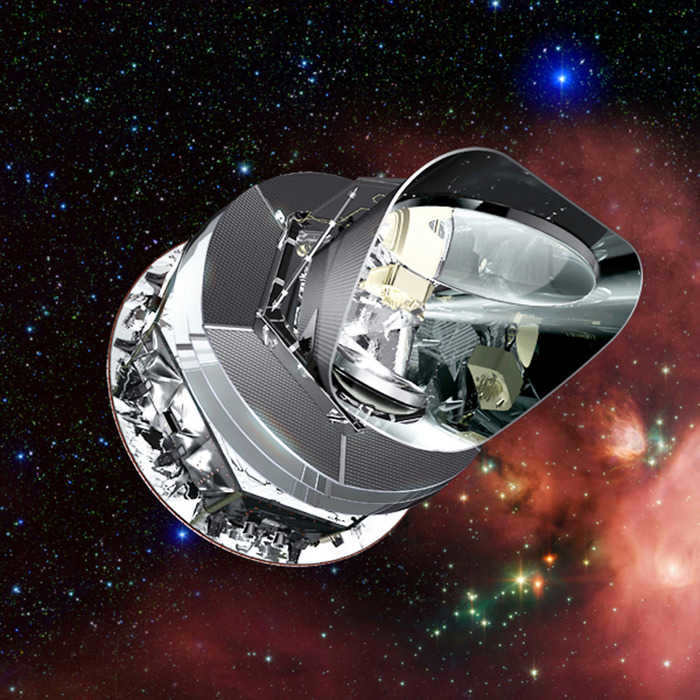
There is a hypothesis that parallel universes coexist with the known world, but they are not necessarily identical to it. It is possible that there are several hundred galaxies that are identical and located close to each other.
Parallel universes and quantum mechanics
On March 15, 2023, The Conversation featured an article by Martin Rees, a British astrophysicist, discussing the concept of parallel universes. Rees highlighted that most of the worlds in the Multiverse are unlikely to support life, unlike Earth. However, statistically speaking, there should be some universes where life is still possible.
The scientist’s statement aligns with the ongoing search conducted by the European Space Agency (ESA). Currently, astrophysicists are analyzing the data from the “Planck” mission, which ceased operations on October 23, 2013.
One of the primary enigmas of this mission involves a peculiar occurrence that could potentially signify the existence of countless galaxies concealed within the outer layer of alternate realms. Unearthed a decade ago, this revelation continues to captivate scientists. However, the predicament lies in the fact that, in the grand scheme of scientific progress, ten years is an inconsequential duration.
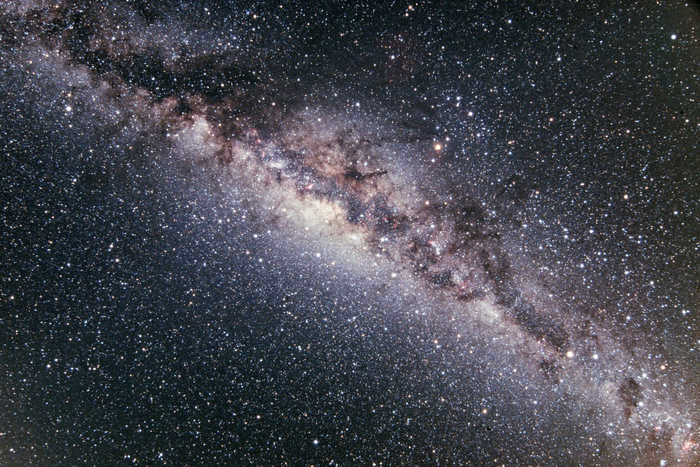
The main objective of the Planck mission was to investigate relic radiation, a constant that originated during the Big Bang and now permeates all of space. This relic radiation is considered to be a crucial element in understanding the Multiverse theory. Iosif Shklovsky, a Soviet astronomer who coined the term “relic radiation,” believed in the existence of parallel universes and proposed that parallelism is not merely a difference in measurements but a physical proximity that is occasionally concealed.
The Planck Space Observatory, equipped with the Gregory System optical telescope, was designed to fulfill this mission. Among its tasks was the monitoring of the intensity and polarization of photons. In 2013, astrophysicist Ram Chari from the California Technological University utilized the Planck telescope to identify certain gaps in the relic radiation of the universe.
On average, these regions exhibited a brightness nearly five thousand times greater than the surrounding Universe. Ram Chari proposed that these bright regions were anomalies resulting from the disruption of the fabric of space and time. These anomalies did not conform to any established cosmological model, leading the scientist to hypothesize that they were a glimpse into a parallel universe nested within another.
These points of light were referred to as the “contact region”. Based on mathematical calculations, it is estimated that such regions could have emerged several thousand years following the occurrence of the Big Bang.
Astrophysics has made significant progress in uncovering phenomena that have been in existence for millions of years. However, in the 21st century, the exploration of parallel universes has encountered obstacles. The current scientific tools are insufficient to delve deeper into this question, and existing cosmological theories restrict scientific innovation and hinder progress. One of the challenges in this field is highlighted by Ram Chari himself.
– The existence of “areas of contact” suggests that the physical laws in these universes must be fundamentally different, he remarked.

Nuclear Physics Explained: Understanding Relict Radiation
Join us in the “Nuclear Physics Explained” series as MEPhI researchers and teachers break down the complex concepts of nuclear physics, particle physics, astrophysics, and cosmology. In this edition, we delve into the mysterious phenomenon known as relict radiation, explaining it in simple and accessible terms.

A discussion on the phenomenon of the Big Bang
Allow me to discuss the event of creation. Please note that I am not attributing any religious connotations to my words. Instead, we will delve into the topic of the Big Bang and the period prior to the emergence of relic radiation. This period refers to the time when the Universe became transparent to photons, and consequently, all forms of radiation.
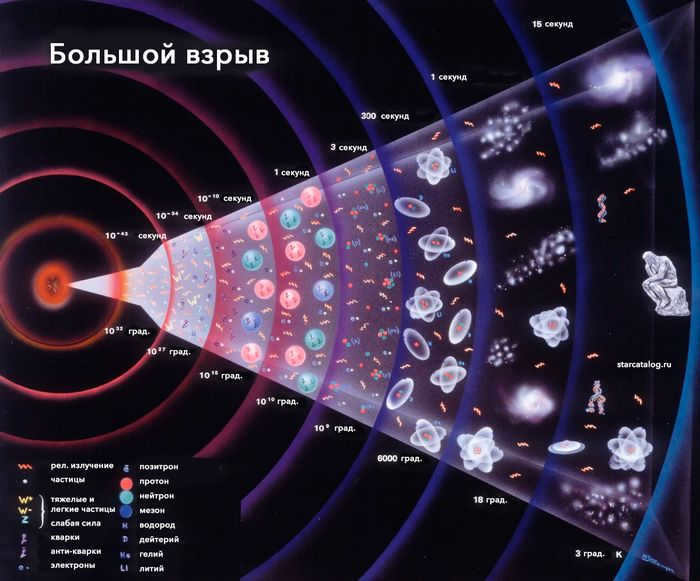
The birth of our Universe occurred approximately 13.799±0.021 billion years ago.
The earliest known time period that we have knowledge of is called the Planck Epoch. It occurred approximately 10^-43 seconds after the singularity, also known as Planck time. During this period, the energy level was equivalent to the Planck energy, which is approximately 1.22*10^19 gigaelectronvolts (GeV). The density of the universe at this time was approximately 5.1*10^96 kg/m^3, and the radius was about 1.6*10^-35 m. The temperature during this epoch was approximately 1.41*10^32 K (Kelvin).
Because the universe was incredibly small during this time, the effects of quantum gravity were dominant over other physical interactions. The gravitational force was comparable to the other interactions, whereas now gravity is considered the weakest force in the universe. The gravitational interaction between a proton and an electron in a hydrogen atom, for example, is weaker than their electrostatic attraction by a factor of 2*10^39.
At this point in time, gravitation was not yet separate from the other interactions. All four interactions – strong, weak, electromagnetic, and gravitational – were united in what is known as the Primary Interaction. Additionally, during this epoch, there was a phase transition where some energy converted into matter, resulting in the formation of elementary particles.
The Great Unification Epoch (GUE) or the Supersymmetry Epoch marks the beginning of the second phase of our Universe’s life, as the force of gravity separates from the other fundamental forces. During this period, quantum effects begin to diminish, while the laws of the general theory of relativity become more prominent. This separation of gravitational and electro-nuclear interactions disrupts the homogeneity and density of matter in the early Universe. The GUE lasted from 10^-43 to 10^-35 seconds, during which time the Universe cooled to a temperature of 10^27 K, with a density of 10^74 g/cm³ and an energy of 10^14 GeV.
After the EVO, the electronuclear interaction and the strong interaction go their separate ways, resulting in the Inflationary Epoch. During this time, the Universe undergoes accelerated expansion, reaches temperatures higher than 10^28 K, and forms its large-scale structure. The Inflationary Epoch comes to an end 10^-32 seconds after the Big Bang.
Following this is the Radiation Dominance Stage, which will eventually lead to the Proton Era.
The first phase of the Radiation Dominance Stage is called the Electroweak Epoch. It spans from 10^-32 seconds to 10^-12 seconds. At this point, the temperature of the Universe remains incredibly high, preventing the electroweak interaction from breaking down into electromagnetic and weak interactions. The intense heat and energy in the medium result in the formation of W-, Z- bosons (carriers of the weak interaction) and Higgs bosons.
As the Universe expanded further, its temperature and energy decreased, resulting in the separation of the electroweak interaction into weak and electromagnetic forces. This marked the beginning of the Quark Epoch (10^-12 – 10^-6 seconds), during which the quark-gluon plasma formed. In the subsequent Hadronic Epoch (10^-6 – 100 seconds), the plasma cooled and gave rise to hadrons, including baryons and mesons. Many of these hadrons annihilated with antihadrons, leaving behind the particles we see today. At the same time in the Hadronic Epoch, neutrinos were released two seconds after the Big Bang. One second later, the Universe’s temperature dropped to a point where leptons ceased to be produced.
Leptons, which are the remnants of hadron-antiadron pairs that annihilated the majority of mass in the early Universe, also undergo annihilation with their antiparticles during the Lepton Epoch or the Epoch of Nucleosynthesis.
The process of primary nucleosynthesis occurs during the entire epoch between 100 seconds and 3 minutes after the Big Bang. After this point, the temperature of the Universe decreases to a level that is too low for further nucleosynthesis to occur. Primary nucleosynthesis results in the production of hydrogen and its isotopes, accounting for approximately 75% of the total, as well as helium and its isotopes, comprising about 25% of the total. In addition, trace amounts of lithium, less than 10^-9 of the total, are also generated during this process.
During the Proton Epoch, there is a shift in the balance of power between matter and radiation, resulting in a change in the expansion of the Universe. Approximately 70,000 years after the Big Bang, the era of radiation dominance comes to an end and the era of matter dominance begins. This transition is marked by the occurrence of hydrogen recombination, which occurs about 380,000 years after the Big Bang. During this process, electrons slow down and combine with protons to form atoms, making the Universe transparent to radiation. This radiation is commonly referred to as the Relict Background or Relict Radiation.
